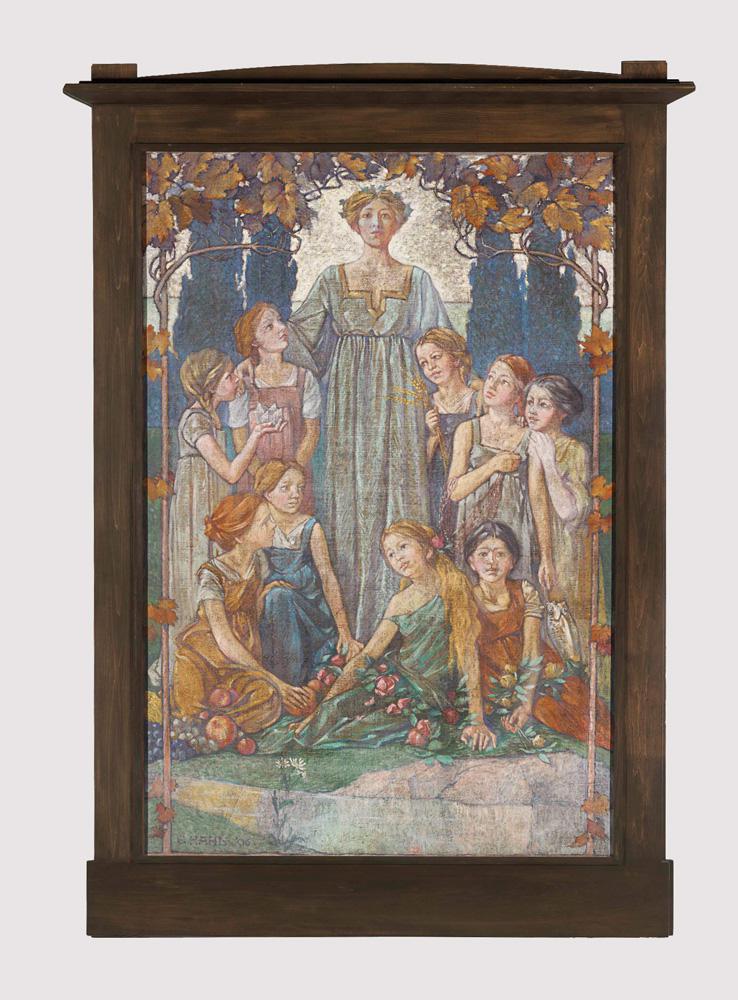“The architect, sculptor, and painter should work hand in hand.” Such a pronouncement, offered in 1901 by George A. Reid—painter, architect and much else—might be the enduring motto of “Artists, Architects and Artisans: Canadian Art 1890–1918,” which surveyed a foundational and underappreciated historical period of creative production in this country. The exhibition gave tangible shape to the optimistic and progressive spirit of the early 20th century, when there was great hope that bringing together creative and intellectual disciplines would promote social betterment. Amid the alienating conditions of industrialization, harmonizing the arts was seen by many as the means to harmonize humanity.
For his ambitious final exhibition there, Charlie Hill, the National Gallery of Canada’s revered curator of Canadian art, took a real risk, amassing an impressive but perplexingly eclectic range of more than 320 objects. Paintings and sculptures were joined by murals, maquettes, urban-park plans, musical instruments, woven rugs, a reconstructed domestic chapel and a great deal more. While it was at times difficult to see the forest for the trees, the display was purposeful, its demands rewarding. One’s attention was caught and held by astounding records of cross-disciplinary collaboration and multidisciplinary mastery. Some objects were the consolidation of labour and skills from plural sources working “hand in hand.” Others were created by remarkable individuals, like Reid, whose output transcended professional boundaries: a piano designed by an architect, book covers by painters, jewellery by a muralist. Tributes and allusions to music, poetry and literature hint loudly at the true scope of influence guiding these talents.
The exhibition contained works by more than 70 individuals. Muralist Frederick Challener, future members of the Group of Seven, sculptor Alfred A. Laliberté, metalworker Paul Beau and architects Percy Nobbs and brothers Edward and William Maxwell stood out as some of the most enterprising talents. So did the Women’s Art Association of Canada, Toronto’s Architectural Eighteen Club and the Montreal-based Castle and Son stained glass and cabinet-making company. These firms, organizations and clubs helped to articulate and sustain the progressive and synergetic energy of the period.
“Artists, Architects and Artisans” attended equally to unrealized proposals and finished products, and in so doing it underlined the sometimes frustrating history of visual-arts patronage in Canada. For every Les Groisardières summer home on the Île d’Orléans, Russell House hotel in Ottawa, Saskatchewan Legislative Building in Regina or Royal Alexandra Hotel in Winnipeg—massive projects that incorporated sculpture, decorative carving, murals, furniture and architecture—there were countless false starts or failed attempts to galvanize interest or funding. Even when Reid painted two very large panels and four spandrels free of charge for the Toronto Municipal Buildings (today Old City Hall) in 1899, this did nothing to convince the City Council of he and his colleagues’ more ambitious plans to complete extensive mural designs throughout the Council Chamber.
Hill’s exhibition stands as an accomplishment of consolidation and research, one that not only benefits, but also requires, the commensurately sized multi-authored French and English catalogues. It is also an exhibition with surprisingly contemporary resonance. By highlighting the collaborative, boundary-breaking and socially engaged pursuits of the pre–Great War generation, “Artists, Architects and Artisans” reawakened forgotten parallels between the past and the anti-hierarchical and interdisciplinary character of much creative practice in Canada today.
This is an article from the Summer 2014 issue of Canadian Art. To read more from this issue, visit its table of contents. To read the entire issue, pick up a copy on newsstands or the App Store until September 14.









